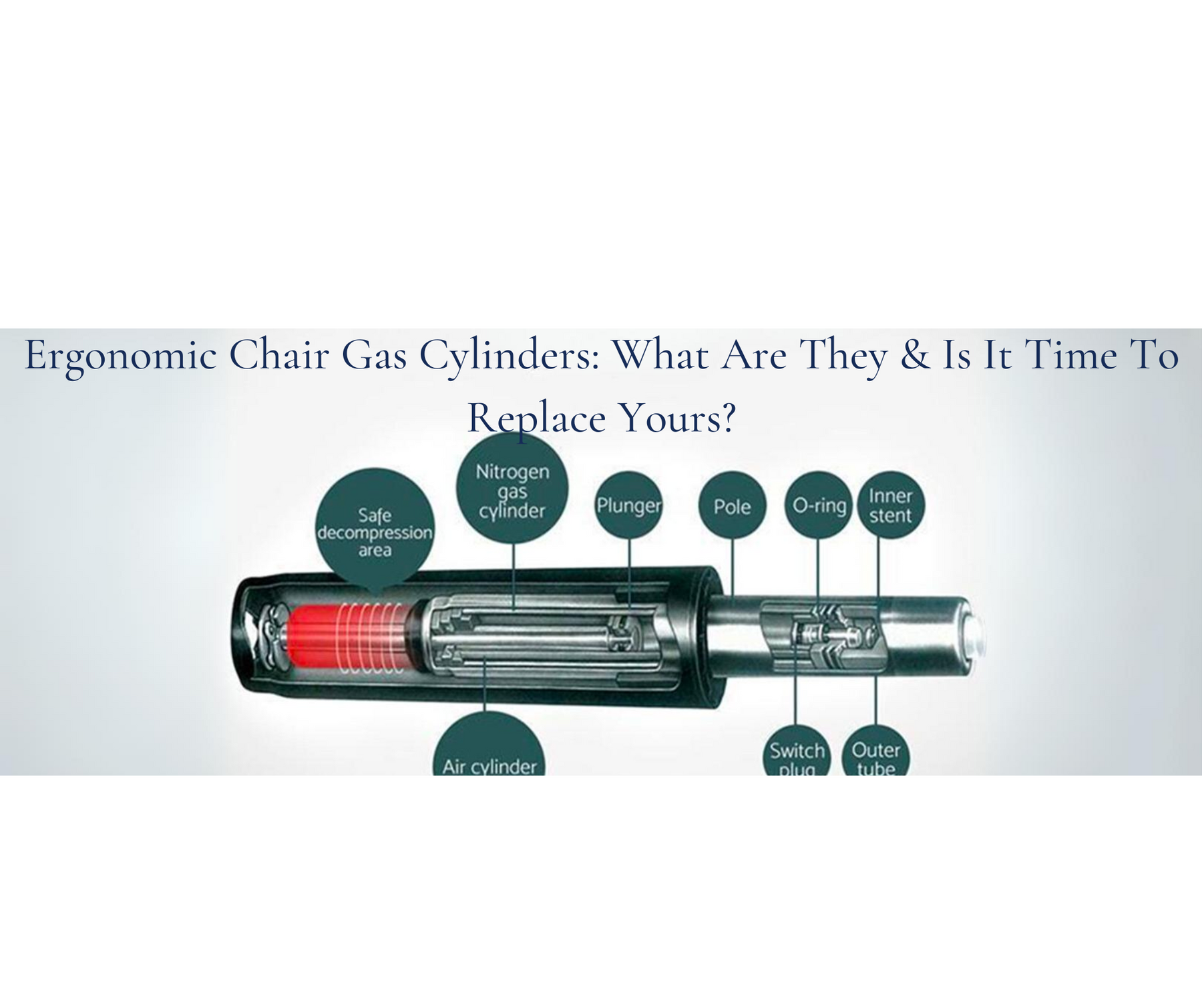
Ergonomic Chair Gas Cylinders: What Are They & Is It Time To Replace Yours?
Ergo Shoppe Essential Highlights
- What is a Gas Cylinder?: A gas cylinder, also known as a gas lift or pneumatic cylinder, is a device that allows for height adjustment in office chairs. It's located at the center of the chair's base and connects the seat to the pedestal.
- Importance of Quality: When buying an ergonomic chair, seek a high-quality gas cylinder for durability and safety. A well-made cylinder is less likely to fail and can offer smoother height adjustments, enhancing comfort and work experience.
- Is It Time to Replace My Gas Cylinder?: If your chair won't stay at the desired height, sinks unexpectedly, or you notice difficulty adjusting its height, it's likely time to replace the gas cylinder.
- DIY vs Professional Replacement: Replacing a gas cylinder is generally a straightforward task that most people can do. However, if you're uncomfortable with DIY tasks or if the chair is costly, professional replacement services are available.
Introduction:
When it comes to office chairs, one component that often goes unnoticed but plays a crucial role in comfort and adjustability is the gas cylinder. Also known as a gas lift or pneumatic cylinder, this device allows you to adjust the height of your chair to suit your needs. In this blog post, we'll explore what gas cylinders are, how they work, and how to replace them when they fail.
Overview of Office Chair Gas Cylinders
The cylinder of a chair, commonly referred to as a gas cylinder, gas lift, or pneumatic cylinder, is a cylindrical device located at the center of the chair's base. It connects the seat to the pedestal or base plate and enables height adjustment. Gas cylinders are an essential component in ergonomic chairs, providing the flexibility to tailor the chair's height to different users or tasks.

Components of a Gas Cylinder
A typical gas cylinder consists of the following components:
- Outer Cylinder: The external casing that houses the internal components.
- Inner Cylinder: The internal rod that moves up and down.
- Spring: Provides the force needed for the height adjustment.
- Bearing: Allows for smooth movement of the inner cylinder.
- Button: The part you press to release the gas and adjust the chair's height.
What's Your Level? Picking the Right 'Lift' for Your Chair
Gas cylinders for chairs are typically classified into four levels based on their load capacity and durability:
- Level 1: These are the lightest and least durable, suitable for budget-friendly chairs. They can support up to 250 pounds.
- Level 2: More durable than Level 1 and can support up to 300 pounds. Suitable for most general-purpose chairs.
- Level 3: These heavy-duty cylinders can support up to 400 pounds. Ideal for users who weigh more than 275 pounds.
- Level 4: Used in specialized applications like medical chairs, these can support up to 500 pounds.
Signs of a Broken Office Chair Gas Cylinder
If your chair won't stay up, sinks down, or you can't adjust the height, the gas cylinder is likely failing. These are common signs that your gas cylinder needs replacement.
Impact on Chair Functionality and Safety
A malfunctioning gas cylinder not only affects your comfort but can also be a safety hazard. It can cause the chair to drop suddenly, potentially leading to injuries.
Factors to Consider When Choosing a Replacement
- Load Capacity: Ensure the cylinder's load capacity exceeds your weight.
- Durability: For heavy use or if you weigh more than 275 pounds, opt for Level 3 or Level 4 cylinders.
- Adjustability: Some cylinders offer more height settings.
- Warranty: Look for cylinders with an extended warranty period to protect your investment.
If unsure, consult with a certified ergonomist to help you choose the right cylinder for your needs.
How to Replace an Office Chair Gas Cylinder
Precautions and Safety Measures
Before you begin, read the manufacturer's guidelines and wear safety gear like gloves and eye protection.
Step-by-Step Guide for Replacement
- Remove the Base: Turn the chair upside down and remove the base.
- Detach the Old Cylinder: Use pliers to remove the retaining clip and pull out the old cylinder.
- Install the New Cylinder: Insert the new cylinder into the chair's mechanism.
- Reattach the Base: Secure the base back onto the chair.
- Test: Adjust the chair's height to ensure the new cylinder functions correctly.
Tools and Resources Required
- Pliers
- Safety Gloves
- Eye Protection
- New Gas Cylinder
- User Manual
Conclusion:
Whether you're in the market for a high-quality ergonomic chair or looking to extend the life of your current one, understanding the ins and outs of gas cylinders is essential. This guide has equipped you with the knowledge to make informed decisions, from identifying when it's time for a replacement to selecting the right cylinder level for your needs. Investing in a chair with a top-grade gas cylinder can significantly enhance your comfort, safety, and overall work experience. If you find that it's time for a new chair altogether, don't hesitate to explore our premium selection at The Ergo Shoppe. So, don't just sit there—take action to elevate your workspace today!
